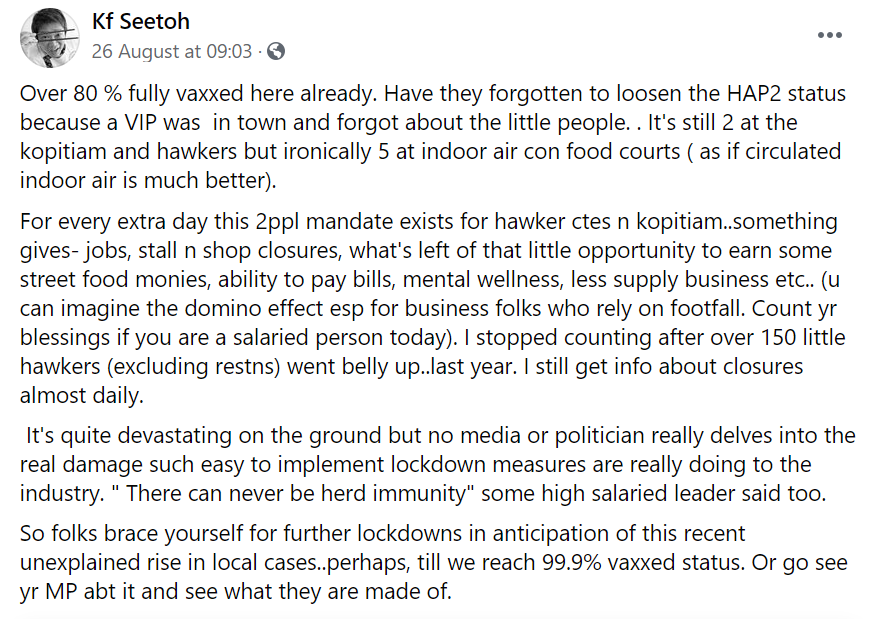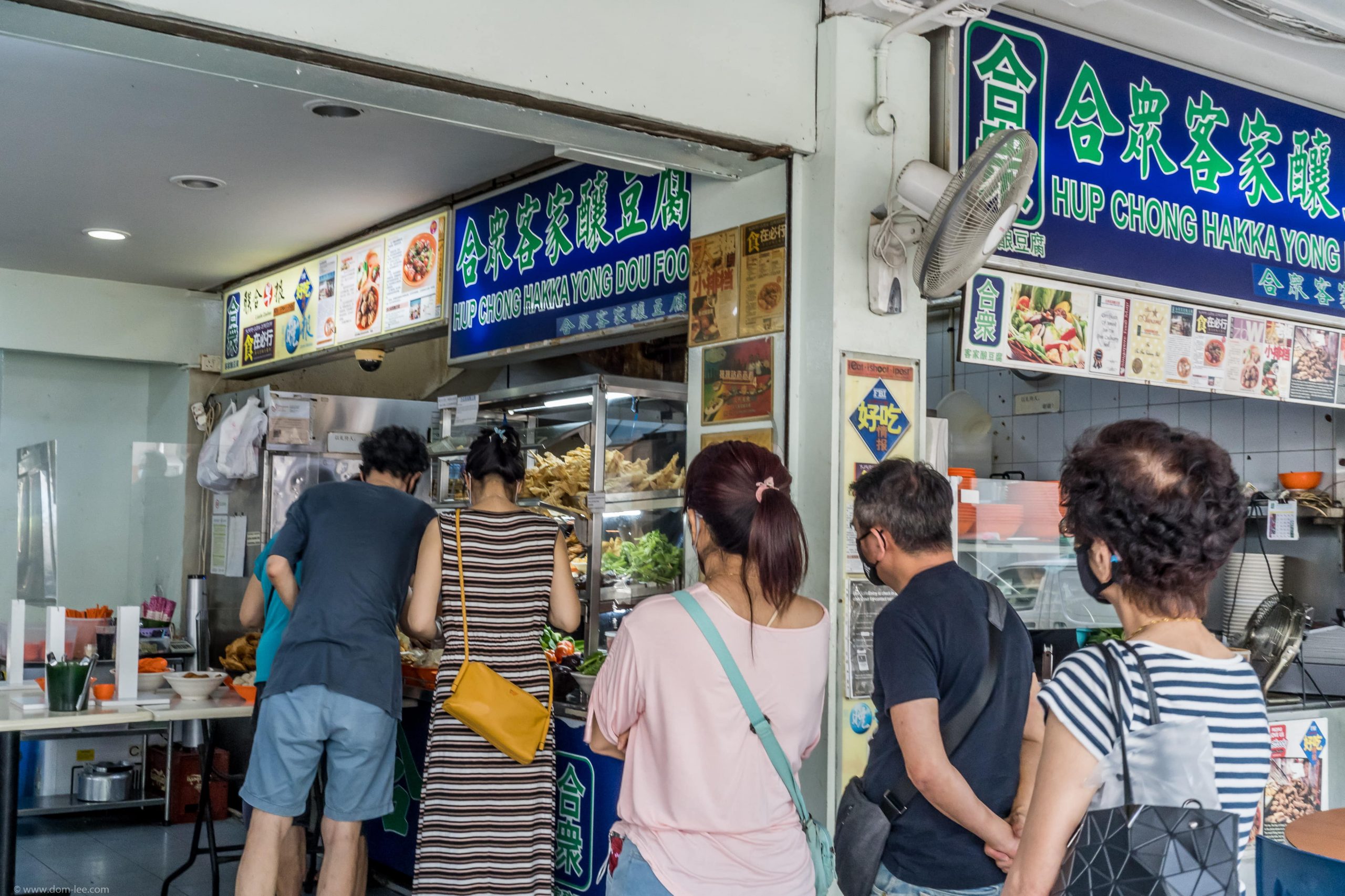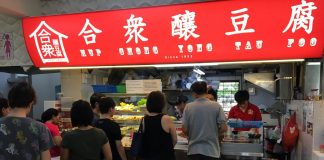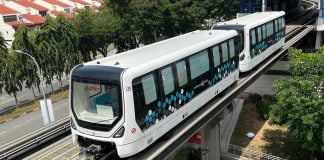Increasing Dine-In Limit Would Burden Hawkers, Say MOH & NEA In Response To KF Seetoh
Since 10 Aug, we have been able to dine in at hawker centres and coffee shops whether we’re vaccinated or not. However, there is a limit of 2 people at these locations.
Food blogger KF Seetoh had asked why the limit remains as it’s costing the livelihoods of hawkers.
In a response published on The Straits Times (ST) on 27 Aug, the Ministry of Health (MOH) and the National Environment Agency (NEA) noted that it’d be “impractical” to raise the cap at these places.
KF Seetoh cites damage to hawkers with 2-pax dine-in limit
In a Facebook post on 26 Aug, Mr Seetoh noted that even though Singapore has reached 80% fully vaccinated status, the cap on hawker centres and coffee shops remain at 2.
He called the concurrent 5-pax limit at indoor food courts “ironic” in light of this.
It, he said, means “something gives” for each day the limit remains:
- Jobs
- Shops & stalls closure
- Street food monies
- Ability to pay bills
- Mental wellness
- Less supply business
Mr Seetoh said he’d stopped counting after over 150 “little hawkers” folded last year, and still receives news of closures almost daily.
MOH & NEA say “impractical” to raise limit in response to KF Seetoh
MOH and NEA noted in their response that requiring vaccination checks by hawkers would add to their burdens when they’re already struggling.
This is because there are both people dining in and getting takeaway orders, and these places are “open and porous”.
Dining in is also considered a high-risk activity given people are interacting with their masks off in close quarters.
So, if a diner is unvaccinated, they are at high risk of contracting Covid-19 and falling ill.
Authorities allowed the 2-pax dine-in limit at these locations even though F&B places that cannot check vaccination statuses are not normally allowed to have them “as a concession”, MOH and NEA said.
The move was done to help hawkers and stallholders and still limit Covid-19 spread.
Government providing support
While the limits exist, the Government has provided support through schemes such as the Market and Hawker Centre Relief Fund.
There have also been rental waivers and subsidies for hawkers, MOH and NEA said.
Other initiatives such as the Food Delivery Support Scheme (FDSS) for hawkers to sign up for online delivery services have also been rolled out.
Lastly, they noted that occupancy rates have remained at an average of 97%, in response to Mr Seetoh’s claim that “over 150” hawkers folded last year.
Hope for situation to improve
The plight of many hawkers now is that they face restrictions that cannot be fully mitigated.
At the same time, we understand that there are practical challenges in enforcing vaccination checks at these locations.
The only hope now is that the situation may improve soon and that these businesses are able to adapt to these limits.
Have news you must share? Get in touch with us via email at news@mustsharenews.com.
Featured image adapted from Dom Lee on Flickr.










